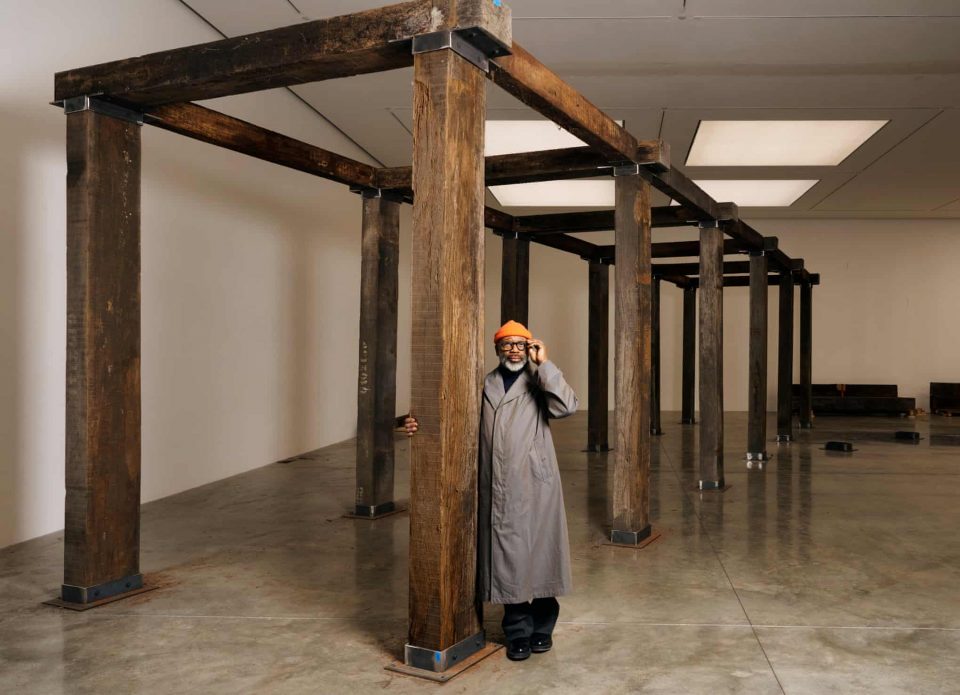In the realm of my profession, a recurring question from people is, “Among all the individuals you’ve interviewed and chronicled, who has inspired you the most?” My thoughts frequently drift back to a memorable day from a decade ago, when I drove around South Chicago with Theaster Gates—a radical potter, visionary urban planner, guerrilla archivist, and situationist gospel singer.
At that time, Gates, who was 41 and possessed a vibrant charisma and intellectual vigor, was deep into a transformative initiative aimed at rejuvenating his neighborhood, which had suffered from prolonged neglect, unemployment, poverty, and associated crime. He envisioned creating a thriving community of artists and makers who would cultivate and nurture the area themselves. While working as a planner and educator at the University of Chicago, Gates confided in me during our drive about a question that had begun to haunt him: why do those lacking imagination and solely focused on profit—the real estate developers—dictate the redevelopment of neglected urban areas? Shouldn’t the voices of those who care deeply about these neighborhoods—those who grew up and continue to live there—play a pivotal role instead?
To address this dilemma, Gates had begun purchasing one or two abandoned homes on his street years earlier, using his entire life savings of $18,000 for the first. He later funded additional purchases by selling editions of art he produced; one successful series was made up of shoe-shine stands created from reclaimed wood, which evoked a rich history of Black-American culture, while others included beautiful collages constructed from repurposed fire hoses, dubbed *In the Event of a Race Riot*. With these funds, Gates revitalized these homes, imbuing them with a rugged beauty formed from reused materials. The first of these, the Archive House, was filled with 14,000 art books sourced from a defunct bookstore. The second, known as the Listening House, housed vinyl records salvaged from a former local record store, while a soul food kitchen was established in between, inviting the community to engage with these spaces.
By the time I came to visit, Gates’s initial endeavor had sparked a broader local revival, as the entire neighborhood began to awaken and reclaim its potential, inspired by his actions. We toured his studio, which supported 60 artisans, and the impressive decaying bank building he had acquired for just a dollar, which he ambitiously worked to convert into a gallery space, funding the restoration through the sale of bonds made from the building’s original marble tiles—each inscribed with the phrase “In art we trust,” a nod to Marcel Duchamp. At that meeting, Gates was actively sought after for his vision, sharing it with communities struggling in the American Rust Belt and beyond.
At the time, I felt that Gates’s work stood in stark contrast to the naïve philosophy often espoused by tech entrepreneurs and venture capitalists—the idea that advancement requires hastiness and destruction. Gates exemplified a more human-centered approach: to remain grounded and preserve, utilizing one’s agency to breathe life into enduring values.
Fast forward ten years—years characterized by the disillusionment of the hopeful messages from the Obama era—I found myself again connecting with Gates at the White Cube gallery in Bermondsey, South London, where he was preparing for a significant exhibition that reflected his current contemplations. As the 47th president was being inaugurated, Gates was unpacking a multitude of vast shipping crates containing his own vision for revitalizing America.
The exhibition, titled *1965: Malcolm in Winter: A Translation Exercise*, revisits events from 60 years ago, specifically focusing on Malcolm X’s assassination, while employing a uniquely evocative perspective. After his show in Tokyo last year—which examined the connections between the American civil rights movement and Japanese craftsmanship—Gates encountered Haruhi Ishitani, an 87-year-old woman whose late partner had been influential in documenting Black-American history and translating Malcolm X’s speeches into Japanese. Their unique archive, built over decades of study and passion, became a central focus for Gates’s exhibition.
Some components of this collection now fill the gallery where we conversed, and they will be featured prominently in Gates’s Bermondsey showcase, alongside monumental architectural sculptures and basic Japanese hut structures. He is convinced that the timing of receiving the Malcolm X materials was intentional: “Perhaps the purpose of my exhibition in Tokyo was to establish this connection and acquire the archive.” Gates views his role as an artist as one of tuning into the prevailing “frequencies” of the moment and finding the appropriate expression for those sentiments—a bit less sharpness, a bit more depth.
If you’re curious about the ties between civil rights and Japanese pottery, Gates has insightful interpretations, all of which reflect on principles of quality and dignity. As the youngest of nine children to a teacher mother and a roofer father, he learned the value of broad knowledge from his mother and craftsmanship from his father. Initially aiming to become a potter, Gates honed his skills for several months in Tokoname, a historic Japanese pottery center. “I thought I was quite skilled until I met these 90-year-old masters, at which point I realized I had a lot to learn.” This rigorous craft discipline shaped his artistic approach and drew parallels to the steadfastness of the civil rights champions he admired.
“The critical question here,” he gestures around the gallery, “is how to convert political values into aesthetic ones. Though I’m not a historian, my role as an artist is to awaken consciousness. If I merely displayed a dozen paintings, things would be mundane. However, this,” he indicates the boxes of archival items, “aligns with my vision. It’s about uncovering these narratives together.”
He’s captivated by the potential within the archive, viewing it as seeds awaiting nourishment, excited by its tangible nature. “In contrast, institutions would swiftly tuck these items away, hiding them in secure spaces. But this is active engagement. These documents yearn to be brought to life.”
Considering the present moment as an opportunity for revival, he reflects, “Indeed. While the inauguration was taking place, I found myself immersed in this history, contemplating the methodical terror inflicted on citizens through assassination. Our leaders were systematically executed—Fred Hampton, Malcolm X, Martin Luther King, Bobby Kennedy. That’s an alarming tally of loss. When people argue that the left in America is weakened, it’s crucial to recognize just how effective those tactics were. These individuals were proponents of racial unity and solidarity, and the status quo viewed them as threats.”
Gates passionately expands upon his theme, emphasizing that whether one is an artist, a compassionate historian, a perceptive lawmaker, or an urgent songwriter, they will inevitably engage in socially responsible work. “That engagement must resist the ongoing alignment of government with corporate interests, big tech, and massive communication entities.”
Central to Gates’s message is the notion that, as our world increasingly becomes digitized and manipulated, asserting the significance of craft and handmade objects is inherently political.
He opens a box next to him and offers me a homemade civil rights calendar from 1968, its pages marking historical occurrences. “Take a look,” he urges. “It’s a reminder that, ‘They’ll make us forget these narratives unless we forge lasting legacies from them.’” As I flip to the current week, I am struck by the coincidence that Trump’s inauguration coincided with a more significant observance—the public holiday celebrating Dr. Martin Luther King Jr.’s birthday. This serves as a powerful reminder, embodied in Gates’s artistic philosophy: just as alternative histories were possible, so too are the futures we dare to dream about.
*1965: Malcolm in Winter: A Translation Exercise* is on display at White Cube Bermondsey from February 7 to April 6.


